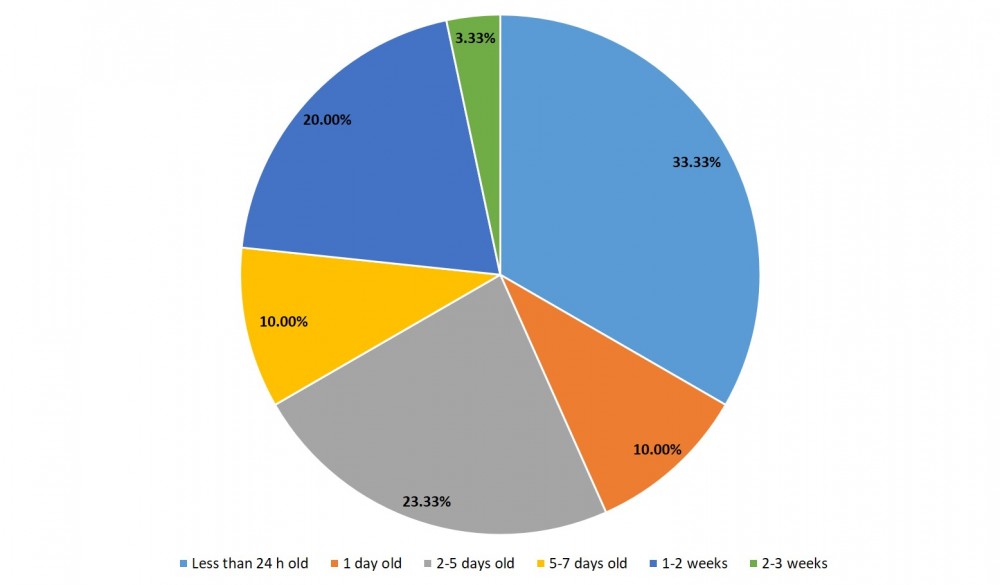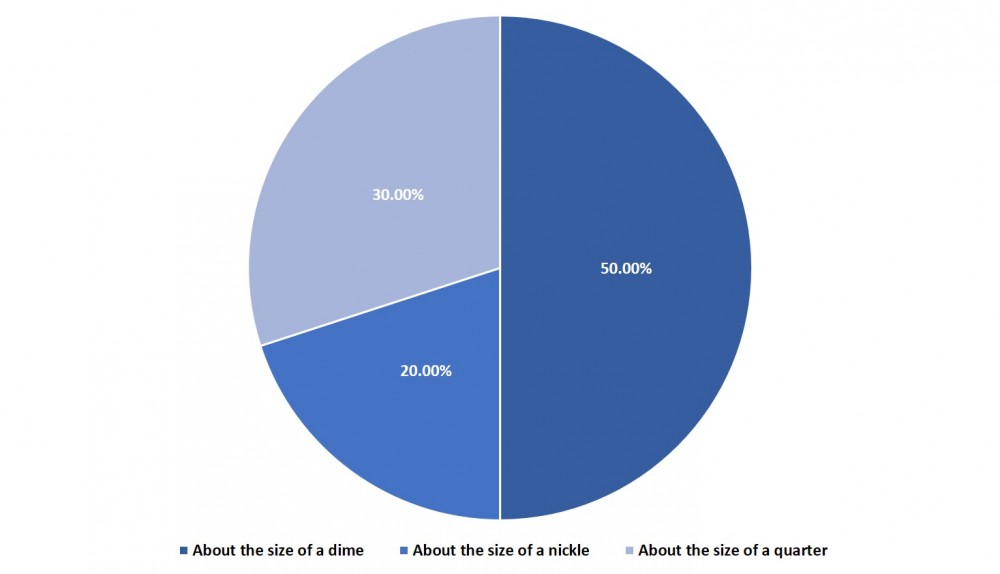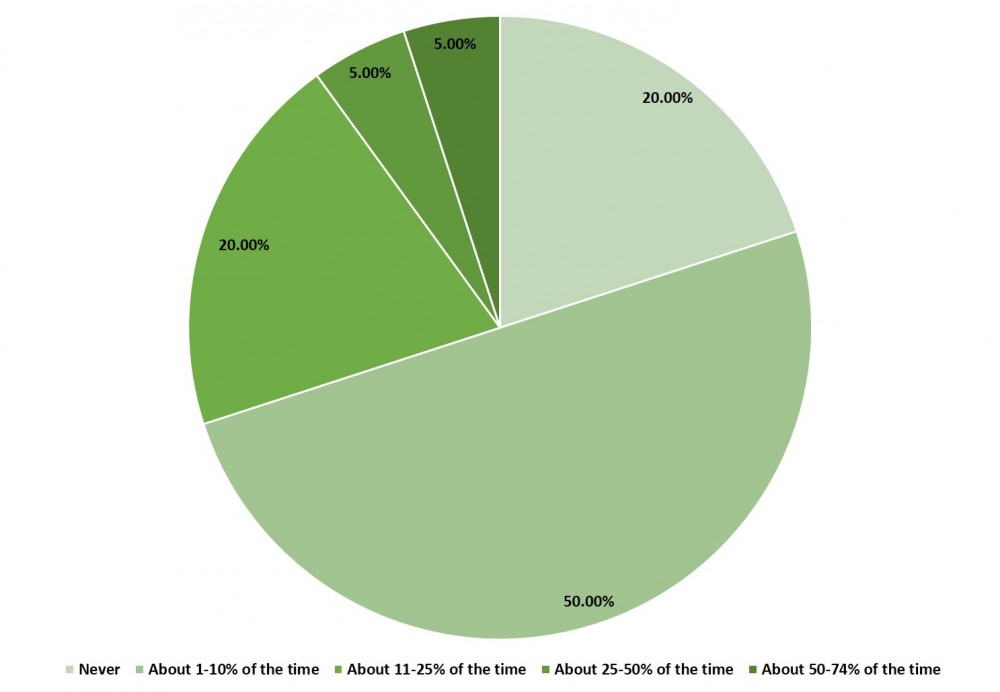Understanding use of caustic paste to prevent horn growth on New York dairy farm
Alycia Drwencke, Dairy Management Specialist
Southwest New York Dairy, Livestock and Field Crops Program
Understanding use of caustic paste to prevent horn growth on New York dairy farms
Alycia Drwencke, Dairy Management Specialist, Southwest New York Dairy, Livestock and Field Crops Program
Across the United States, 94% of farms perform disbudding or dehorning procedures to prevent horn growth for the safety of humans and animals in their dairy herd. A common approach to disbudding is permanent damage of the horn bud tissue either with a hot iron (heat) or caustic paste (chemical). Over the last decade, farms have increased their use of caustic paste with 30% or more of farms using it as their primary disbudding method. Despite the increasing popularity, limited research is available leaving many questions unanswered on best management practices for caustic paste disbudding.
To better understand how New York (NY) dairy producers are using caustic paste, a survey was sent out in February and March of 2021. There were 23 respondents, 3 of which were from states other than NY (Texas, Wisconsin, and Pennsylvania). Farm size varied with 40% (9 farms) raising 100-300 calves per year and the second most common size being more than 1,000 calves per year at 18% (4 farms). All other respondents ranged between less than 50 calves per year to the more than 1,000 per year.
Survey responses were only kept if farms selected caustic paste as their primary method of preventing horn growth (3 of 23 removed). In total, 20 farms answered questions on how they currently use caustic paste. On those farms, the primary breed of cow was Holsteins at 74% (17 farms), followed by Jerseys 9% (2 farms), with Ayrshires and Milking Shorthorns each represented by 1 farm.
Age and time of paste application

Figure 1: All respondents reported applying caustic paste to calves at 2-3 weeks or younger with the breakdown visible in the graph above. The most reported age at paste application was less than 24 hours.
When asked the age of calves at time of paste application, all farms reported applying paste at 2-3 weeks or younger (figure 1). This suggests farms are likely using caustic paste at a younger age than other methods of disbudding. Looking at age consistency of calves when paste is applied, 75% (15 farms) reported calves being the same age at the time of application. One farm reported in the open response section "I try to do them at [one] day old but, if [they are] born during the week they are done on Saturday or Sunday morning as I am the only one who does the paste."
Survey respondents were also asked, "What time of day do you apply paste to a calf? Is the time of day you apply paste influenced by other daily tasks such as milk feeding?" Responses varied with some farms reporting consistent application times, while 5 farms reported varying application throughout the day. Half of farms (10) reported applying paste in the morning or between their am and pm feeding. One farm said "[Paste application is] always before noon, if I can't get to it before then, I wait until the next day. This is because I want the calf ready to eat for the afternoon feeding"
Method of paste application
Looking specifically at how farms are applying paste to their calves, 95% of farms reported clipping the hair around the horn bud (19 farms) while most farms (18) reported not roughing up the skin on the horn bud. 50% of farms reported using Dr. Naylor's paste, followed by 25% using Dr. Larson's, with the rest of respondents using other brands of paste.

Figure 2: Farms varied in the amount of paste applied to a horn bud, pictured above. While it was not directly asked about, this may be due to brand of paste used or age of the calf at time of application.
55% of farms (11) reported not rubbing the paste into the horn bud when it was applied, and one farm was unsure. 100% of farms reported not applying a balm (i.e. Vaseline) around the horn bud as a method of "containing" the spread of paste. Following paste application, 65% (13 farms) reported not covering the paste with anything, while the rest of respondents cover the horn bud and paste with tape. In the open response section, one farm offered evidence for why they choose not to cover the horn bud by saying "We tried covering with duct tape but it made huge holes in their heads, prone to pus."
Notably, 60% of respondents (12) reported not using pain relief with caustic paste. This highlights an opportunity for additional conversations as research has shown that caustic paste disbudding painful and that pain likely persists throughout the healing process. Additionally, according to the National Milk Producers FARM animal care standards, version 4.0, pain mitigation should be used for all methods of disbudding or dehorning. Of farms that reported using pain mitigation, 3 farms use a local anesthetic (i.e. Lidocaine) at paste application, while 4 farms reported providing an NSAID at the time of disbudding. One farm reported providing Meloxicam one feeding prior (6-12 hours) to paste application.
Effectiveness of caustic paste disbudding
One frequently reported concern of caustic paste is having finding it in an unintended location. When asked how often producers find paste on another part of the calf other than the horn bud or on a pen mate, respondents reported never at 35% (7 farms), 1-10% of the time at 55% (11), and 11-25% of the time on 10% of farms (2). In the open response section, one farm said "Most is rubbed off onto condo walls."

Figure 3: Looking at how successful the disbudding was with caustic paste, 20% (4 farms) reported never having horn re-growth, with all other respondents reporting some level of regrowth in their herd. Most commonly, 50% (10 farms) of respondents said 1-10% of their calves experience horn regrowth.
When asked if there was anything else they wanted to share, one farm said "[We] previously used propane dehorner to cauterize NOT disbud. [It] worked well with minimal disruption to calf from pain. Present herdsman prefers paste. I do not." Another farm reported "Calves are raised in hutches. They are dehorned prior to being moved to the hutches. After feeding is the best time because they usually lie down and aren't active. 24 hours or less of age is best. Always before 48. Cannot be done if the environment is wet (rain or snow)."
While this survey is limited in what it can tell us due to the small sample size, it is a valuable conversation starter within the industry. As caustic paste disbudding continues to gain popularity, peer to peer learning can be a valuable tool to understand best management of this procedure, highlighting an opportunity for additional outreach and education.
Photo caption: A calf is pictured with freshly applied caustic paste on the horn bud.
Understanding Caustic Paste Use on NY Farms (pdf; 694KB)
Upcoming Events
WNY Pastureland Conversion & Soil Health Field Day
July 16, 2025
Middleport, NY
Join American Farmland Trust for the Western New York Soil Health Field Day on July 16, 2025, at Zeliff Farm in Middleport, NY, from 9:00 AM-3:15 PM. Learn about pasture conversion, soil health benchmarking, biochar in grazing systems, and best grazing practices. Plus, enjoy hands-on demos with the NY Soil Health Trailer, drones, and cover crops! Check out the attached agenda for more information about the field day and REGISTER HERE. Zeliff Farms is a regenerative beef operation who has recently partnered with AFT on outreach and education to farmers including learning circles and evaluating biochar effects on soil health.
IPM Strategies to Protect Corn and Soybean Seed in NY
July 30, 2025
Hamburg , NY
SWNYDLFC and Cornell IPM are hosting a grower meeting to discuss integrated pest management strategies for protecting corn and soybean seed in New York.
FAMACHA Training for Sheep and Goat producers in Woodhull NY
August 13, 2025 : FAMACHA Training in Woodhull
Woodhull, NY
Join us for a discussion and hands-on training for internal parasite integrated pest management in sheep and goats. Certification is available to all students participating in the workshop.
Announcements
No announcements at this time.





